Fridge water dispensers are an incredibly convenient addition to your home. They give you easy access to cold water, helping you to stay hydrated without water jugs or coolers littered around your kitchen. Sometimes though, dirt or blackish stuff can come out of your fridge dispenser and the water should not be consumed.
The black stuff found in fridge water dispensers is usually mold. However, it can also be yeast, dirt, mineral deposits, or even carbon from the fridge filter. The water should not be consumed until the dispenser and filtration components have been cleaned. If the filter is moldy it should always be replaced, rather than cleaned.
In this guide, we look at what the black stuff coming out of your fridge water dispenser could be and why it’s there. We also explain how to get rid of the black stuff and how to prevent it from coming back in the future. Because let’s face it, there is nothing worse than horrid black stuff coming out of your refrigerator when all you wanted was a cold glass of pure water.
Reasons Why Your Fridge Dispenser Has Black Stuff
Refrigerator water dispensers are great, especially if your fridge also has an ice dispenser.
The convenience of drinking clean water also makes it much easier for you and your family to stay hydrated.
But, the ease and convenience of a fridge water dispenser can start to seem like a disadvantage when you notice black stuff coming out of the dispenser.
This black stuff could be one of several things:
1. Mold
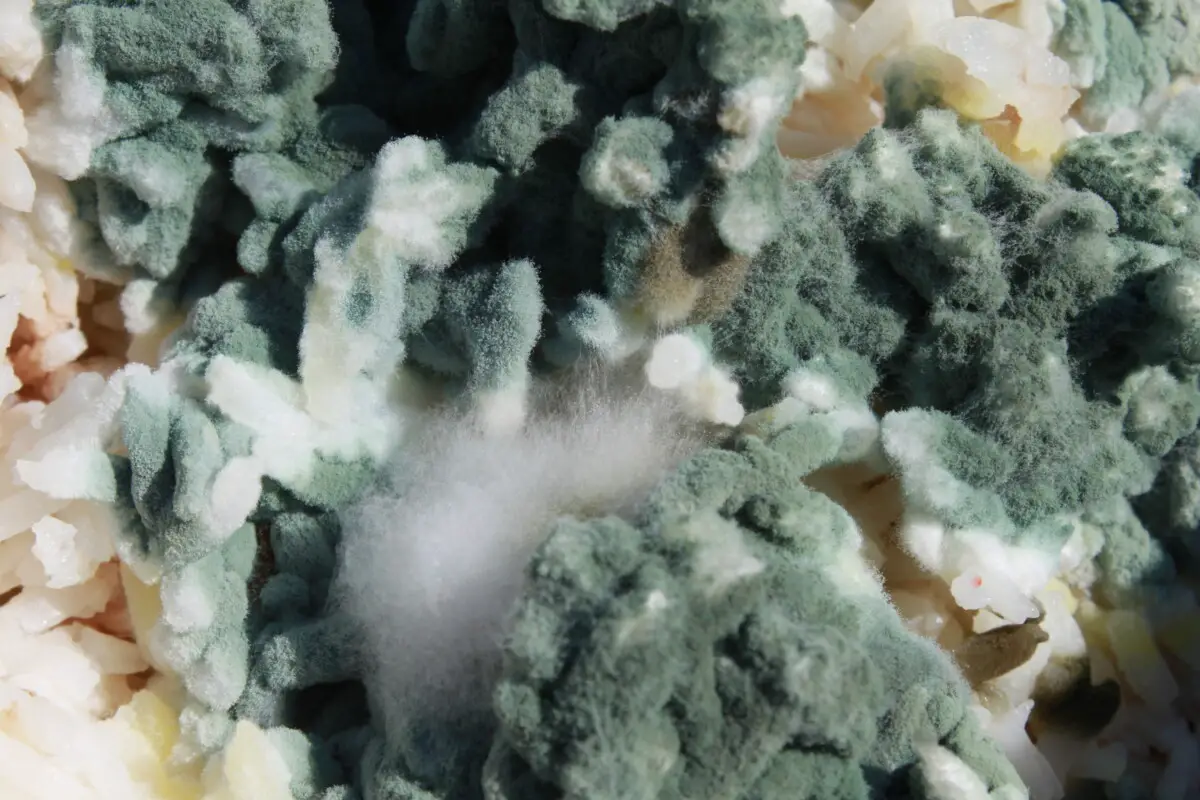
Mold is a tiny organism that reproduces by releasing several hundreds of thousands or even millions of spores into the air.
If mold is growing in your fridge water dispenser, it doesn’t necessarily mean you have a mold problem in the rest of your house.
Most mold spores are naturally common in the air and can easily find their way into your dispenser system. Once settled in, they begin to grow.
One of the most important things mold needs to thrive is moisture.
And your fridge dispenser provides it with just that. Here, the mold likely also has access to food particles to feast on.
These particles could be specks of food that may fly about during cooking, minerals from the water itself, cross-contamination from glass cups or water bottles used to get water from the dispenser, etc.
Or even our dirty hands.
Once the mold has found a conducive environment in your fridge dispenser, it grows and may appear in your water as greenish-blackish specks.
Mold particles are a bit tricky to recognize and can also be mistaken for dirt.
However, if the particles tend to float on the surface of the cup, then it very likely could be mold.
Mold also gives your water a characteristic musty smell or taste.
How to get rid of mold
Your fridge dispenser requires thorough cleaning to get rid of this problem.
Read your user manual to get an idea of the specific parts of your fridge that can be removed and how.
The manual should also give you an idea of the best way to clean your particular fridge model.
- After going through the manual and dismantling the appropriate parts, clean the interior of the dispenser with mild soap.
- Chlorine kills mold and its spores on contact, so rinse the parts with chlorinated water from your tap. Followed by clean, non-chlorinated water if possible.
- Vinegar is also an alternative to chlorine in this case.
In fact, vinegar is more effective that chlorine or bleach at removing mold spores, so this is a great option if you have it at home.
- Remove the water filter and flush the water line with chlorinated water to kill off any microorganisms.
- Before you do this, shut off the water supply valve, disconnect the line, and drain out any water left in the line.
- Pour in vinegar or chlorinated water and leave to sit for about 15 minutes, then pour out the vinegar solution. Rinse a few times with clean water.
- Clean the reservoir by flushing it with vinegar water, then rinse it well with clean water.
- Clean every part of the dispenser as meticulously as possible. A small brush or a pipe cleaner may help you clean the water nozzles better.
- Reconnect the lines, turn the valve back on, and run clean water out of the dispenser for a few minutes to clear out any soap, vinegar, or chlorine residue.
Repeat this cleaning process often – once every month or every two months. Clean the water line once every six months or so.
If the mold is in the pipes, they may need to be replaced, especially if the problem persists after cleaning.
It’s also important that if your water filter itself has become moldy you must replace it. DO NOT attempt to clean and reuse it. Always replace a moldy filter.
2. Yeast
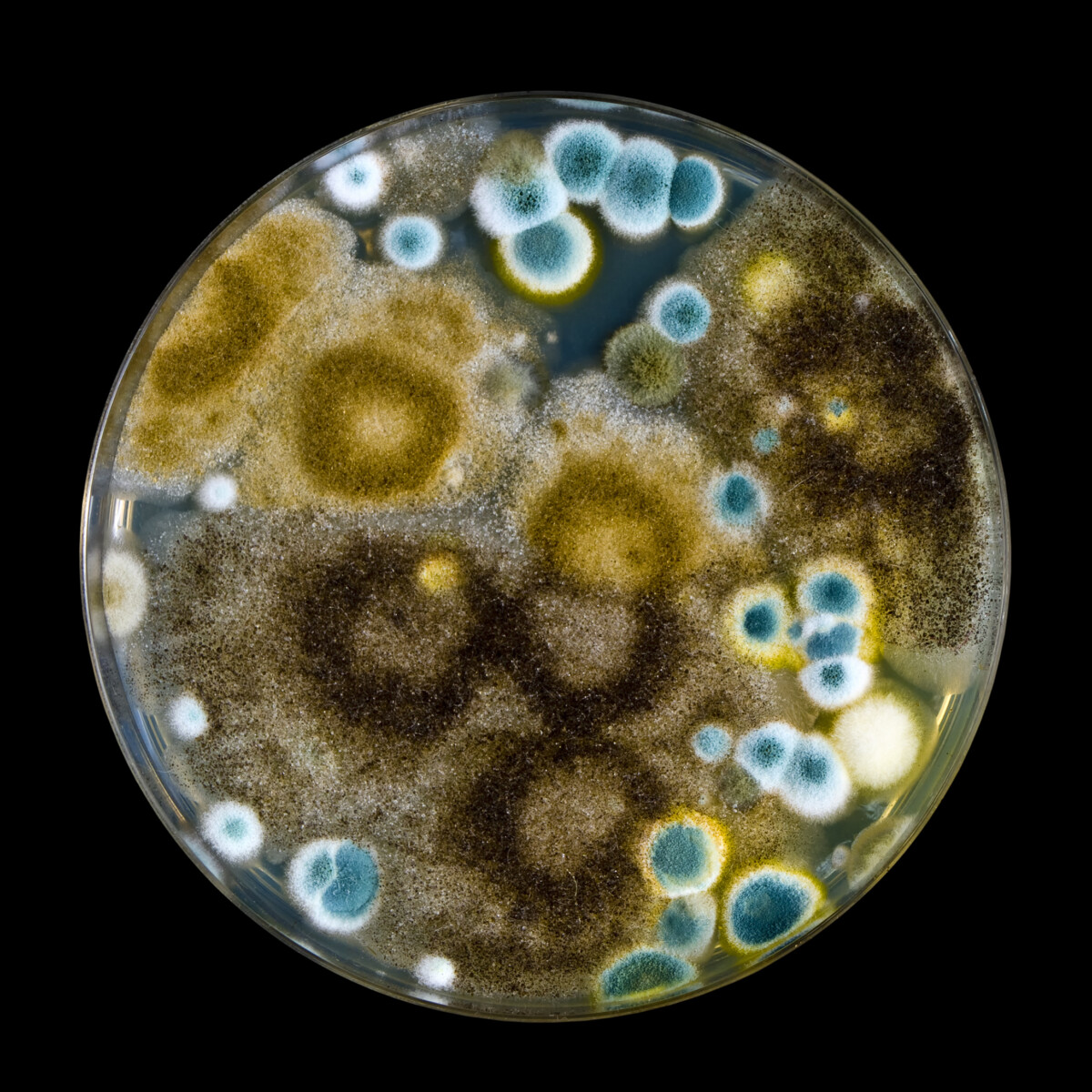
Yeast is a fungus, just like mold. They grow the same way and may look very similar to ordinary eyes.
The blackish stuff in your refrigerator may be yeast, not mold. However, this is more of a technicality because the difference is hardly significant to you.
To remove yeast, simply follow the same procedure for removing mold outlined above.
3. Mineral Deposits
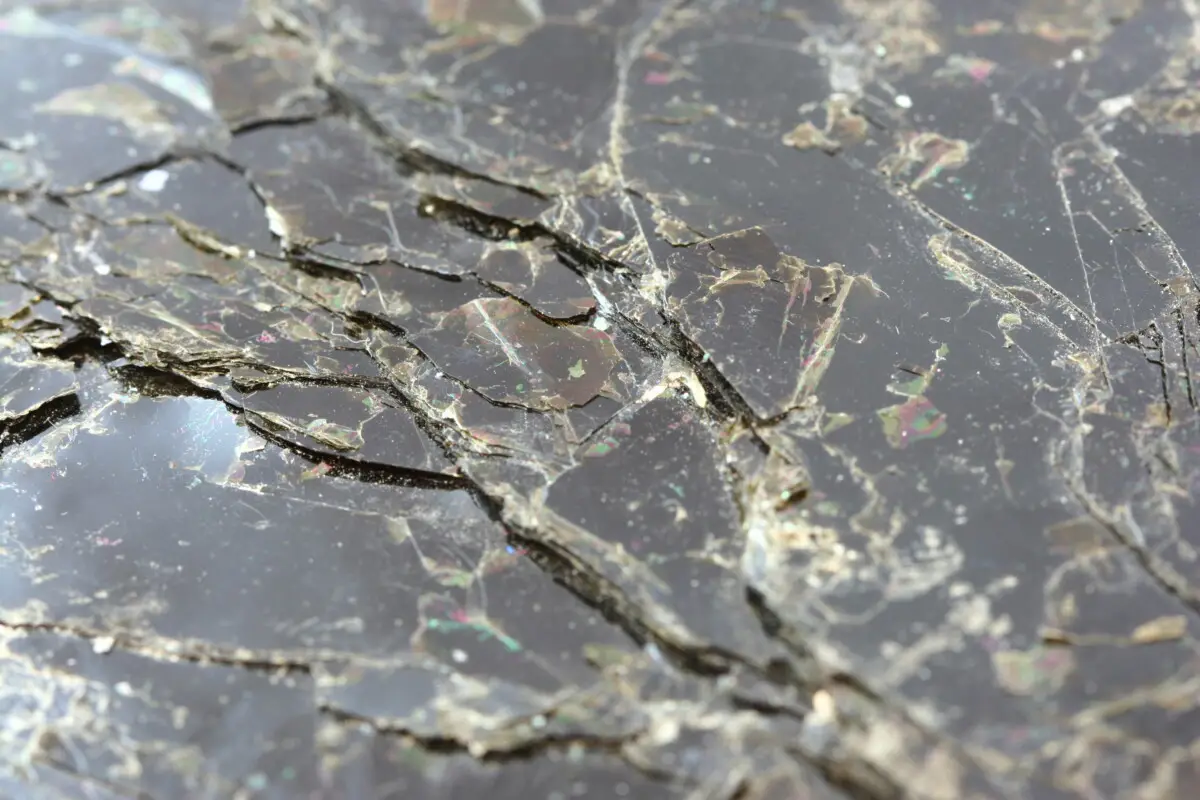
Minerals like iron and manganese can react with the oxygen in air to form solid dark particles.
These minerals may not be great for your water’s aesthetics, but they don’t pose a serious risk to your health if they are in trace amounts.
To know whether the black stuff in your fridge dispenser are mineral deposits, do a water test. These tests are usually relatively quick and inexpensive.
How to get rid of mineral deposits
Mineral deposits can be a bit trickier to get rid of.
- Soak the dispenser and filtration parts (except the filter) in vinegar for about 20 minutes to soften the mineral deposits, then gently scrub off the deposits.
- If the vinegar solution is too mild and doesn’t work well, you may need to switch to chemical cleaners and repeat the process.
- Remember to rinse off the chemical cleaners thoroughly to protect your drinking water.
Stubborn deposits may require a total replacement of all the system’s tubing.
To prevent mineral buildup, you can treat your water before it reaches the fridge. But this is usually an overly expensive option.
4. Dirt
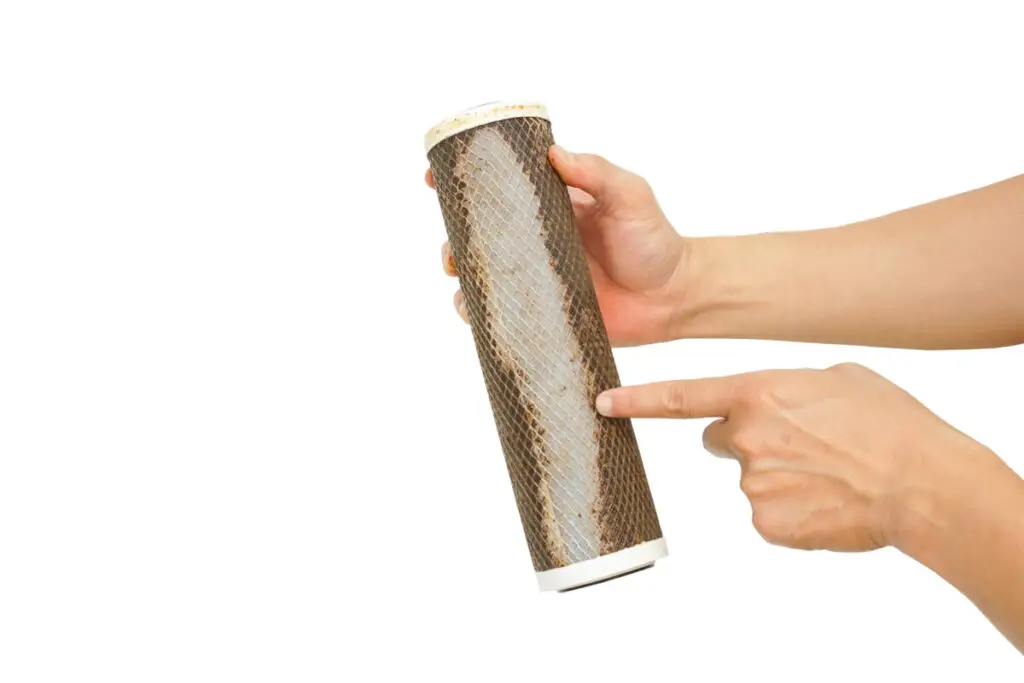
The black stuff in your fridge water dispenser can actually be dirt.
Over time, dirt from the environment, specks of dust in the air, particles from the water, etc., can accumulate in or around your fridge water dispenser.
The dirt and debris can dislodge and enter your drinking water as blackish specks.
How to get rid of dirt
Use the user’s manual of your fridge as a guide as you carefully take apart the fridge dispenser and the water lines.
- Clean every surface with mild soap and clean water. Use a small brush or a pipe cleaner to get to the hard-to-clean places such as the nozzles.
- Flush the lines as well with mild soap. Rinse all components thoroughly with clean water.
- For added effect, you can flush the various parts again with safe disinfectants like vinegar or chlorinated water. Then, rinse off with clean water.
If dirt is your problem then a gentle soap and water clean will be enough. Vinegar or chlorine is really only needed to soften mineral deposits or to kill yeast and mold.
5. Carbon
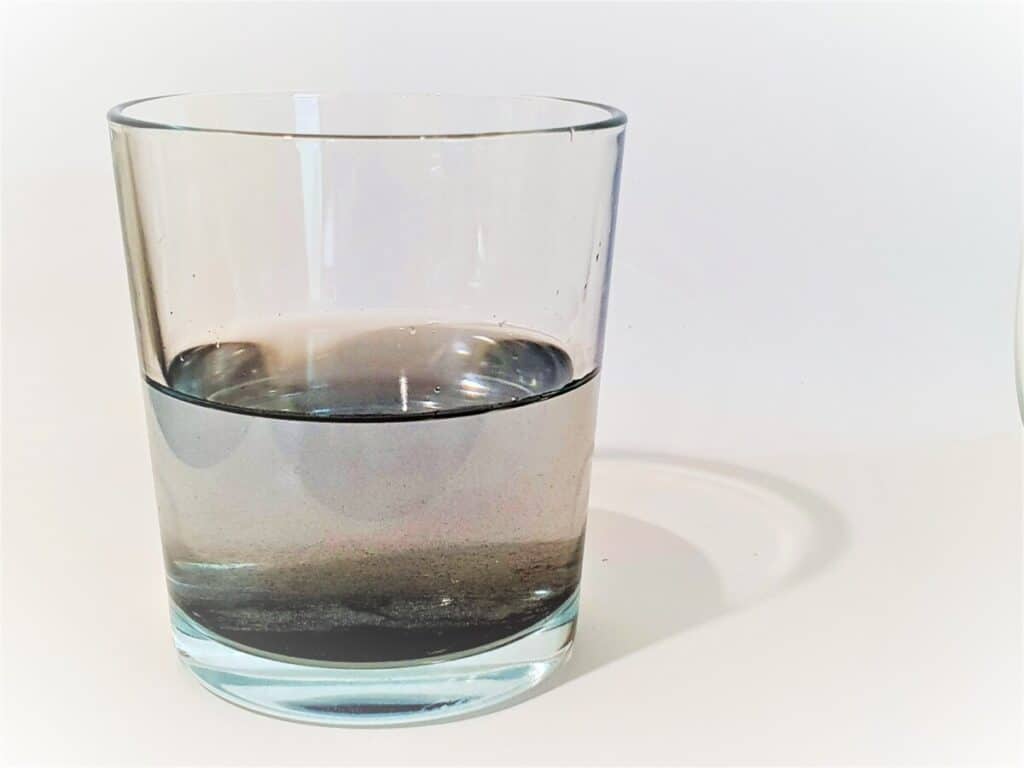
Activated carbon is a widely used and very effective method of filtering out contaminants from water.
Most fridge water filters use activated carbon in their water filtration systems. Often, the carbon is in the form of tiny granules known as Granular Activated Carbon (GAC).
Some carbon granules may become loose during the manufacturing and transporting process. These loose particles may eventually end up in your water.
If the black stuff in your fridge dispenser is pitch black and sinks to the bottom of your glass, it is likely just carbon particles.
Your water is still safe to drink even with carbon particles, but no one wants to keep drinking water with black particles swimming around.
How to get rid of carbon particles
If you just installed a new filter, run water (flush) through the dispenser for the duration recommended by the manufacturer.
- Discard the water when you’re done.
Alternatively, if you haven’t installed the filter yet, you can flush it by soaking it in water or running cold water over it for about 10 to 15 minutes.
The problem may persist if there’s something wrong with the filter. If this is the case, replace the filter with a new one.
If you are keen to bypass your refrigerator filter, Water Purification Guide has a step-by-step process available here.
